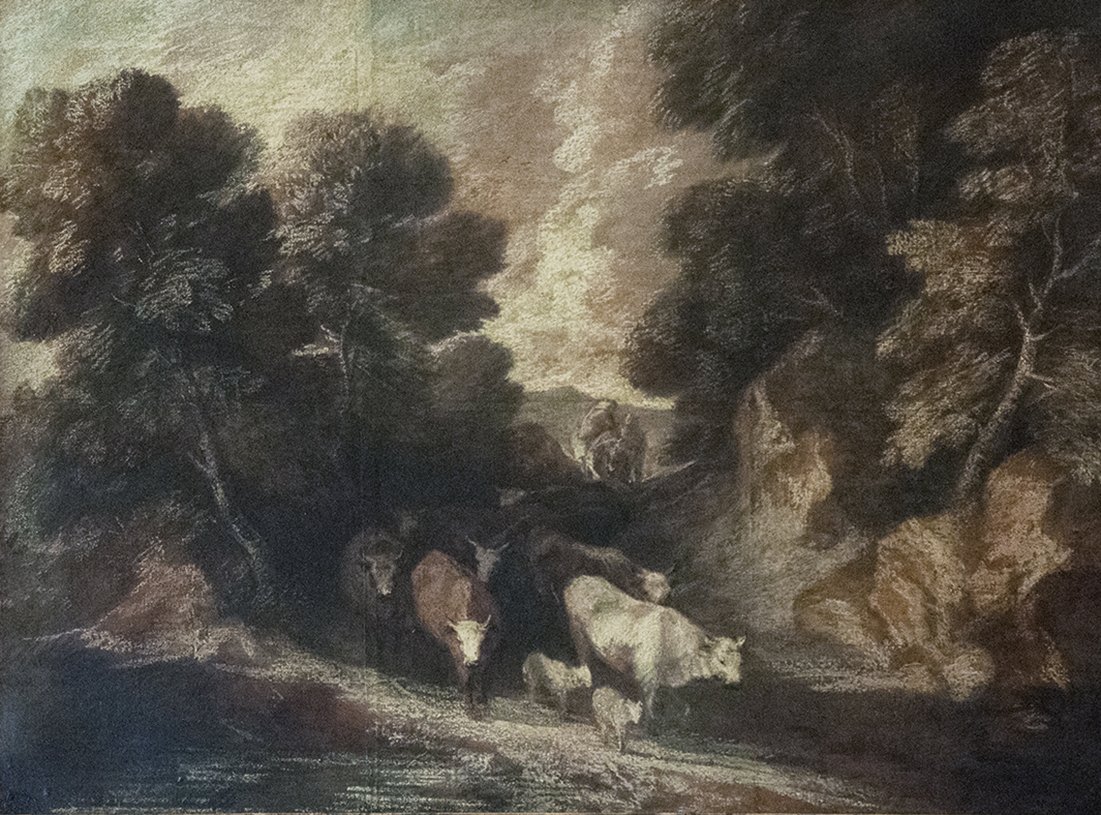
Cattle Returning Along a Wooded Lane
1727–88
Cattle returning along a Wooded Lane
Collection Details
S H de Zoete sale, Christie’s, 8 May 1885, lot 177; bt by Colnaghi; later owned by W de Zoete; his sale, Christie’s, 5 April 1935, lot 76, repd: bt by Leggatt, from whom acquired by Lord Faringdon the same year.
Literature
E K Waterhouse, Gainsborough, 1958, No. 926; John Hayes, The Landscape Paintings of Thomas Gainsborough, 1982, No.102.
Exhibition Details
?RA, 1772, No. 98 or 99; 25 Park Lane, London, Gainsborough, 1936, No. 76; 39 Grosvenor Square, British Country Life, 1937, No. 284; Arts Council, Tate Gallery, Gainsborough, 1949, No. 20; Arts Council, Gainsborough Drawings, 1960, No. 22; Tate Britain, The Art of Thomas Gainsborough, 2002.
Background
Dated by Waterhouse, c.1772, and in the Arts Council Exhibition (1960) as early 1770s. Waterhouse points out that the crayon-like technique is most closely paralleled in the background of certain portraits of c.1772 (for example, that of Lady Margaret Fordyce in the collection of the Earl of Crawford and Balcarres, which was exhibited at the RA in that year). It is possible, as originally suggested in the Arts Council catalogue (1960), that the present picture is one of the Two Landscapes, Drawings, in imitation of oil painting, which Gainsborough sent to the Academy, along with ten smaller works, in 1772 (No. 98) and against which Horace Walpole noted in his catalogue: ‘very great effect, but neat, like needlework’. The other could well have been the Wooded Landscape in the Indianapolis Museum of Art (Hayes, No.99), which is also executed on six sheets of paper pasted together.
The technique is unusual. The paper is primed to a biscuit colour, across which the white highlights are dragged with a brush. The pigments are limited and the picture somewhat resembles a brown monochrome.
A number of analogous drawings from the 1770s are known (cf Hayes, The Drawings of Thomas Gainsborough, 1970, pp. 23–4 and Nos 335ff, passim). They appear to be completed works, and the catalogue of the 1936 exhibition is unlikely to be correct in describing No. 16 as an unfinished lay-in for a picture.
The Trustees of the Faringdon Collection 25.
All rights reserved.
